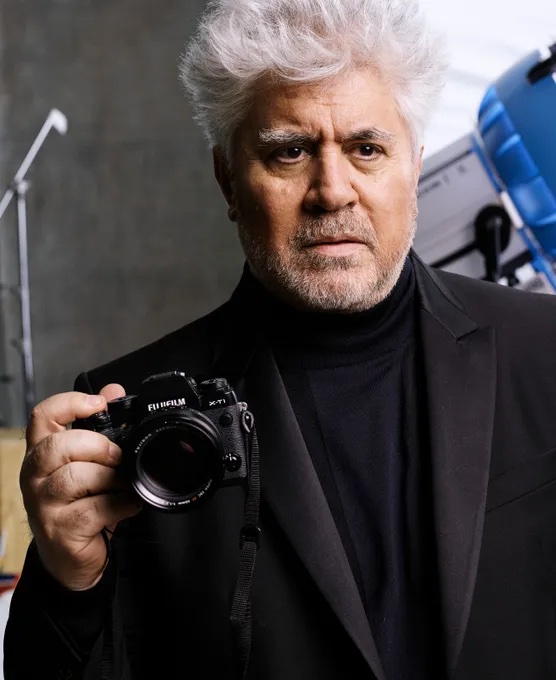The Barbara Streisand Bridge has little to do with La Dynamo’s nose.
It’s a sleek pedestrian walkway connecting what was once a May Company department store to a five-story glass-topped orb at the intersection of Fairfax Avenue and Wilshire Boulevard in Los Angeles.

These two buildings and their splendid outdoor courtyards comprise architect Renzo Piano’s elegantly flowing Academy Museum of Motion Pictures, a new L.A. must-see. While this world-class museum officially opened in late 2021, it has only recently begun to benefit from a post-pandemic resurgence in tourism.
Paired with Streisand’s door stopping new autobiography, tickets for a stroll along her honorary nasal pathway (and a visit to the museum as a whole) would make a terrific holiday gift for the Hollywood aficionado in your life.
And there’s all the more incentive to visit this particular holiday season: Since late September, virtually the entirety of the museum’s fourth floor gallery space has played host to a sprawling multi-media tribute to the movie-making career of “John Waters: The Pope of Trash”
Babs’ Schnozz meets Odorama! For the gays, that’s a gift that’s heaven scent.

Deep waters
The Waters exhibit, which runs through August, has been deemed “so respectful I could puke” by the “Pink Flamingos” director himself. But that show of respect is indicative of the museum’s unexpectedly open-minded overall approach to its subject matter.
While are plenty of crowd pleasing artifacts on display—original costumes from “Edward Scissorhands”, “Black Panther”, and “The Terminator’; extensive exhibits on the making of “Casablanca”, “The Godfather”, and “Boyz in the Hood” (all through the end of 2024, at which point other classic films will be honored)—the entire visitor experience is rich in its specific acknowledgement of minority and female filmmakers.
No doubt this pointed emphasis was sharpened by the fact that the museum opened in the wake of the Me Too and Black Lives Matter movements, but the resulting mission statement, past and planned exhibitions, and current offerings suggest that the effort is ongoing and in earnest.
In a survey of world cinema, John Waters might not top the list of artistic visionaries, but as the Academy exhibition makes clear, his social impact—particularly in the U.S.—has been powerful. Film clips drawn from his 14-feature career are organized by theme demonstrate not just his gleeful passion for gross-out humor and kitschy kink, but recurring critiques of racial and sexual prejudice, celebrity culture, and mass media.
Along with gorgeously displayed excerpts, costumes and set-pieces, the exhibit lovingly showcases ephemera including “Pink Phlegm-ingos” barf bags distributed at early screenings of “Pink Flamingos”, a pair of Mink Stole’s signature cat-eye spectacles, and a hand-lettered flyer promoting one of the puppet shows Waters put on as a child in Baltimore. And, of course, there’s one of the original Odorama scratch-and-sniff cards that audiences used during “Polyester” to immerse themselves in the aromas of dirty sneakers, Divine’s farts and huffers’ airplane glue.
In a small screening room adjacent to the Waters exhibition, an excellent homage to New Queer Cinema and American avant-garde filmmakers runs in a continuous loop. Featuring commentary by renowned queer critic B. Ruby Rich, it includes clips from the works of groundbreaking directors including Todd Haynes, Rose Troche and Gregg Araki.
Outspoken, no tokens
Queer and minority concerns are by no means given a token tip-of-the-hat by one temporary exhibit. In fact, another large area within the museum’s central “Stories of Cinema” exhibition is dedicated to the career of Pedro Almodóvar (through March 2025).

And a thrilling wraparound video display of Oscar acceptance speeches provides compelling evidence of Hollywood’s reflection and amplification of changing social mores:
Guests revisit Halle Berry’s receipt of the first Best Actress trophy ever awarded to a black performer; Sacheen Littlefeather’s advocacy for Native American rights while declining Marlon Brando’s Oscar for Best Actor in “The Godfather”; Marlee Maitlin’s American Sign Language acceptance of her award for “Children of a Lesser God”; and Robert Epstein and Richard Schmeichen’s acceptance of the Best Documentary for “The Times of Harvey Milk” among many others.
The museum’s permanent collection also includes iconic queer mementos such asthe ruby slippers worn by Judy Garland in “The Wizard of Oz”, a collection of zines handmade by Gus Van Sant, and a historical archive of LGBTQ-focused films that are regularly showcased within several screening series open to museumgoers.
Cultural immersion
A thorough visit of the Academy museum’s 200,000+ square feet of exhibit spaces caneasily take three hours of even the most casual visitor’s time. But a full day in and around the complex is highly recommended.
The lower portion of the museum’s landmark orb houses a state-of-the-art 1,000 seat screening room and auditorium where classic films and lectures by moviemakers and historians are presented virtually every day. Many screenings are free with general museum admission ($25 for adults) and others are ticketed separately for $5-$10 (no museum ticket required).
The Streisand Bridge leads visitors to a spectacular 180º open-air observation deck with panoramic views of Los Angeles, Hollywood sign included. There’s an on-site restaurant, café and smartly stocked shop that’s scant on schlocky promotional items and strong on film history books, soundtrack recordings and other substantive souvenirs tied more to Los Angeles and the film industry as a whole rather than individual films and stars.
The entire orb is balanced on massive support plinths, creating an always-shaded sitting area beneath the spherical volume. It’s ideal for escaping the L.A. sunshine; and picnic tables make it a great spot to enjoy tacos and other street eats from the food trucks parked alongside the museum.
The exhibits at the Academy Museum are so well-curated and the physical spaces so airy and well-organized that, even after hours, you may never develop a sense of museum fatigue. If that’s the case, you’re in luck, because the grounds flow smoothly into the campus of LACMA—the Los Angeles County Museum of Art and the La Brea Tar Pits museum.
But the Academy Museum itself is worth a special trip to L.A. It’s a showcase to one of the greatest American industries and the great diversity of the American people.
Academy Museum of Motion Pictures. 6067 Wilshire Boulevard, Los Angeles. (323) 930-3000. www.academymuseum.org
